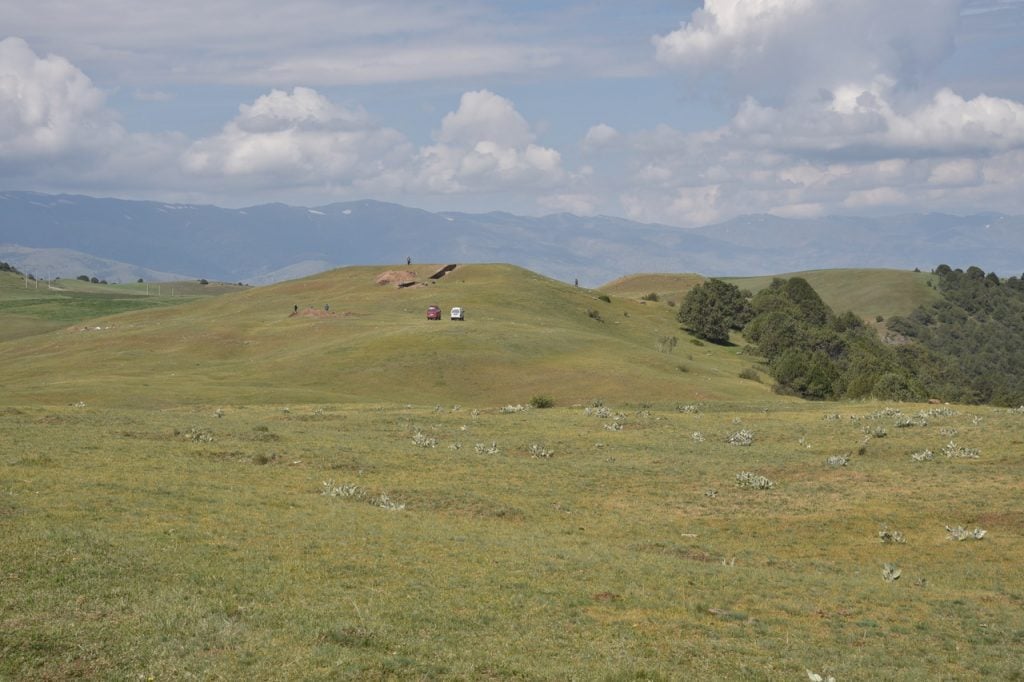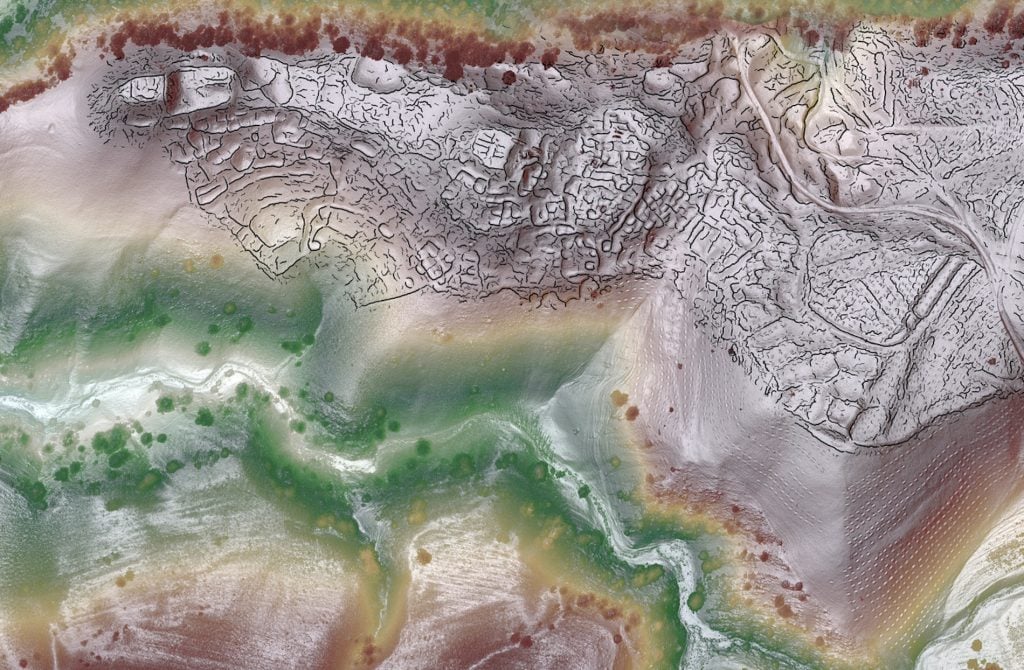Archaeology & History
Drone Tech Makes ‘Game-Changing’ Discovery of Hidden Ancient Cities Above the Silk Road
The high-altitude sites include one of the largest ancient settlements ever found in the region.

In the mountains of Uzbekistan, researchers using new remote sensing technology have discovered a series of cities including a major medieval metropolis “hidden in plain site” above the ancient Silk Road.
The largest city discovered, called Tugunbulak, would have flourished for around 500 years between the 6th and 11th centuries. Covering almost 300 acres, it is one of the largest ancient settlements ever found in the region.
The research was led by Michael Frachetti, a National Graphic Explorer and associate professor of anthropology at Washington University, and Farhod Maskudov, the director of Uzbekistan’s National Center of Archaeology. Frachetti was first inspired to find out whether there could have been complex cities in Uzbekistan’s southeastern mountains when a forestry official approached him during a dig in 2015, saying that he had found ceramics in his backyard.
At an altitude of up to 7,200 feet, the discovery of the large city is changing what archaeologists thought they knew about where major cities were built along the Silk Road and how complex high-altitude cities were.
The city would have experienced extreme cold temperatures with long winters and intense winds. The difficulty to farm this land has led historians in the past to assume that it would not be a lucrative location to search for ancient cities (with famous high-altitude cities like Machu Picchu seen as the exception, not the rule). One theory suggests that high-altitude could have helped the people living in these cities to maintain fires used for smelting and blacksmithing, and excavations have found a kiln.

A drone captured images of Tugunbulak in 2018. (Credit: M. Frachetti)
Frachetti has said, “We need to investigate more, but we have a very strong sense that a major portion of the site was oriented around productive activities, smelting or other sorts of pyrotechnology […] By mid-morning, the ground heats from the sun, and then you get a natural convection system with a long, hard wind that blasts up the mountainsides—a perfect condition for metalworking.”
“Iron and steel were the resources that everybody wanted, along with horses and warriors. This was an age with a lot of rapid change, when everyone needed power to survive. These were the oil fields of the middle ages.”
Another, densely constructed but smaller city named Tashbulak was also found, three miles away from Tugenbulak. Both cities featured plazas, major roads, and fortifications, and Tugunbulak also had a large central fortress along with five watchtowers. “This puts a very big political entity at high altitude” said Franchetti.

A drone captured images of Tugunbulak in 2018. (Credit: M. Frachetti)
These cities were elevated above the Silk Road, an ancient trade route which ran from China to Italy which was imperative for international trade and cultural exchange. These recent discoveries call into question what has been previously understood about the complexity of the route. The research suggests that the Silk Road did not only pass through the lowlands, and instead caravans used to transport good would have been pulled up to high-altitude cities like Tugenbulak and Tashbulak.
Lidar–“light detection and ranging”—technology used to discover both cities involves a drone being flown over hard-to-access sites. The attached lidar camera captures topographical images based on the distances needed for a laser to reach the ground, creating brilliantly detailed images. Frachetti praised the technology, saying it “allowed us to approach this huge landscape in a way that lets you appreciate the scope and scale of the place, with stunning detail.”

Composite lidar view of Tugunbulak. (Credit: SAIElab/J.Berner/M.Frachetti)
Experts are calling the discovery about ancient life in Central Asia a game-changer. Franchetti described the significance of the discovery in no uncertain terms: “If we’re right, we’ve got a new kid on the block […] These people weren’t the barbarian horse-riding hordes that history has often painted them as. They were mountain populations, probably with nomadic political systems, but they were also investing in major urban infrastructure. This changes everything we thought we knew about Central Asian history.”
Full details of the discovery can be found in the paper published on October 23.





